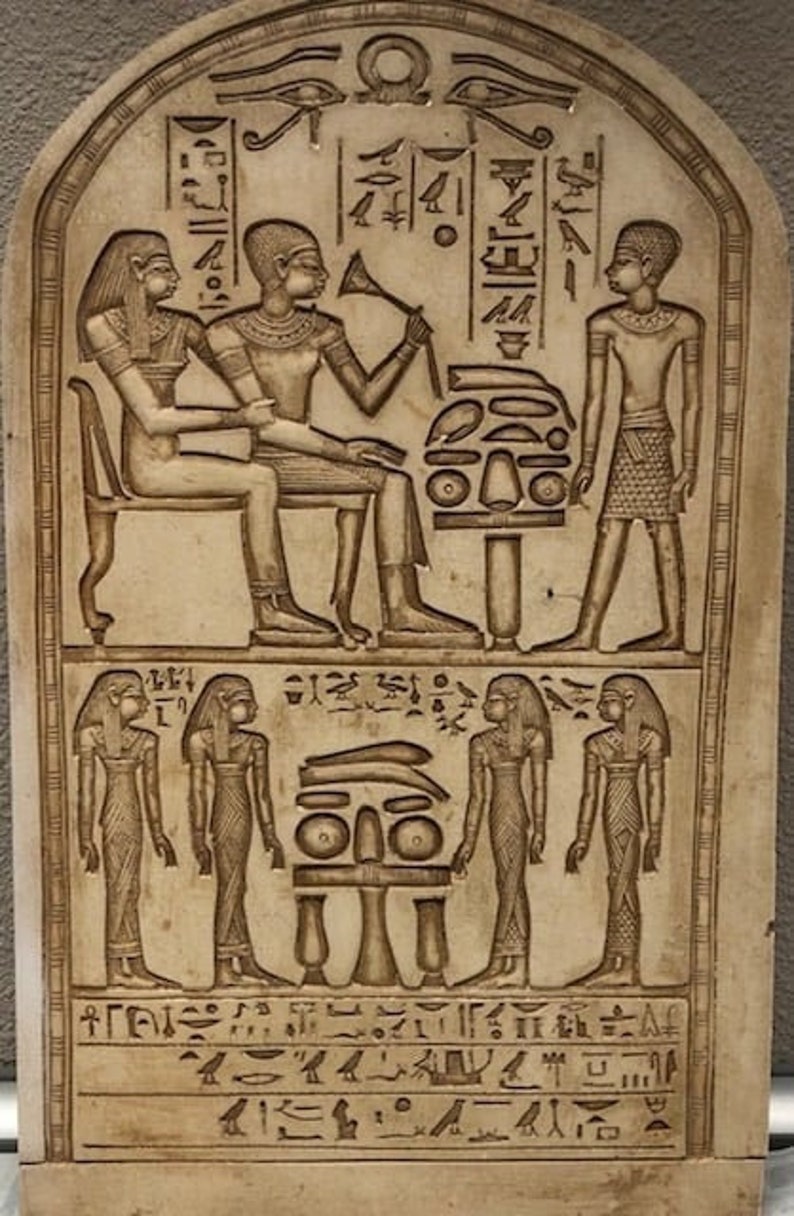In Ancient Egypt there was a real belief in life after death. That belief led them to develop different types of rituals.
The ancient Egyptians fervently believed in life after death and this led them to develop rituals of different kinds. One of these was that of the funeral banquet, based on the belief that the deceased had the same needs in the world of the dead as among the living.
The mummies had to always have provisions, which were supplied by the relatives themselves or by hiring people for this function. If this funeral duty could not be fulfilled, the representations painted on the tombs functioned as substitutes: the peasants were depicted working the land, taking care of the animals, producing the wine or beer, etc., while the deceased appears seated in front of the table loaded with offerings.
This table of offerings was constituted mainly by bread and beer, the typical offerings, but not only because they are the essential foods of the ancient Egyptian culture, but also because they symbolize the shops resurrection of Osiris. Bread and beer are made from grains, symbol of the god of the dead, and bread is also a symbol of abundance.
In the New Kingdom there was a period of great wealth thanks to Asian conquests and trade, and the new luxuries were reflected in the sophistication of the afterlife world. The offering table was filled with exquisite delicacies, becoming a real banquet that included the spectacle of musicians, dancers and games. The repeated theme of the table of offerings, typical of the Old Kingdom and the Middle Kingdom, evolved into a splendid funeral banquet reminiscent of the great popular festivals.
In Nebamun's tomb you can see the banquet painting, where the elegant ladies of the court converse while being attended by the servants. Elegance and ostentation are present in the perfumers on the heads, the large rings on the ears and the luxurious pectorals that adorned the necks.
In the nearby chambers the luxury of the funeral banquet was complemented by dresses, jewelry and the inevitable "responders", those figurines that replace the owner of the tomb in heavy work.
Funeral banquets soon became an obligatory necessity of the Egyptian burial ceremonial. After the burial was celebrated, the relatives and mourners of the deceased gathered, probably in the courtyard of his tomb, to celebrate a banquet whose "positive energy" – so to speak – was to strengthen the deceased to facilitate his rebirth in the afterlife.
The scene is represented mainly in the tombs of the New Kingdom, where it became part of the usual elements of decoration. In fact, the remains of some of these banquets are known, such as the one celebrated after burying Tutankhamun. His remains were buried in what is known as Pit 54, relatively close to the entrance of the tomb (KV62) and inside which were large ceramic jars, linen, natron bags, bandages, cups, animal bones and floral necklaces.
Product code: RECREATION shops of a FUNERAL BANQUET
